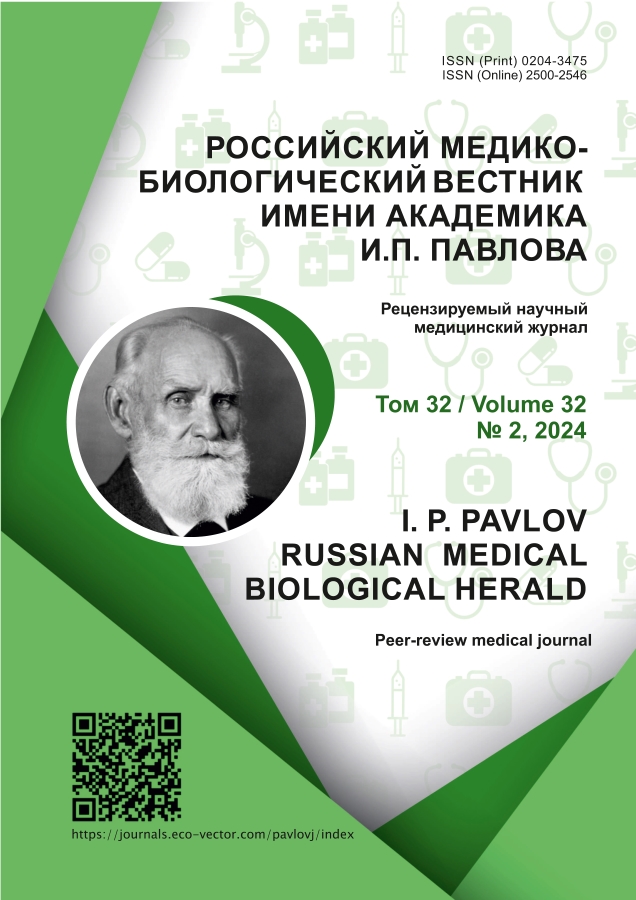Comparative Evaluation of Effectiveness of Lesser Toe Surgical Correction
- Authors: Kireyev S.I.1, Protcko V.G.2,3, Kireyev V.S.2, Olenko E.S.1
-
Affiliations:
- Saratov State University
- Peoples' Friendship University of Russia
- S. S. Yudin City Clinical Hospital
- Issue: Vol 32, No 2 (2024)
- Pages: 225-234
- Section: Original study
- Submitted: 04.05.2023
- Accepted: 06.10.2023
- Published: 10.07.2024
- URL: https://journals.eco-vector.com/pavlovj/article/view/375356
- DOI: https://doi.org/10.17816/PAVLOVJ375356
- ID: 375356
Cite item
Abstract
INTRODUCTION: The relevance of improving algorithms of surgical correction of lesser toes (SCLT) is due to a high incidence of hammertoe deformity syndrome, its negative impact on the working capacity and quality of life, and to a considerable degree of dissatisfaction of patients with the results of surgical treatment.
AIM: To evaluate the effectiveness of an improved SCLT algorithm using a modified fixed B. Helal osteotomy and combined plantar plate (PP) and toe flexor tendon repair.
MATERIALS AND METHODS: The prospective study included 167 female patients with a severe deformity of the second lesser toe. In 83 patients of the control group, the stability of the metatarsophalangeal joint was restored through surgical PP repair. In the main group (n = 84), along with elimination of PP defect, the second toe flexor tendon repair was performed. The condition of the second lesser toe before and one year after its surgical correction was evaluated using clinical and X-ray methods and a questionnaire.
RESULTS: At the stage of assessing the long-term results of treatment in the main group, the integral score of ACFAS Module 2 scale increased by 63 points relative to the preoperative value, which appeared to be 22 points more (Uemp = 3687, Ucr = 4894, р ˂ 0.01) than a similar change in the control group. One year after surgery, the incidence of the floating toe syndrome and its residual hyperextension in the main group decreased by 10.8% (φ*emp = 0.007, р ˂ 0.05) and 8.8% (φ*emp = 0.016, р ˂ 0.05), respectively.
CONCLUSIONS: Application of the improved algorithm permitted to improve the SCLT effectiveness, which was confirmed by a statistically significant improvement of the long-term results of treatment of patients in the main group compared to the control group.
Keywords
Full Text
About the authors
Sergey I. Kireyev
Saratov State University
Author for correspondence.
Email: kireevsi@rambler.ru
ORCID iD: 0000-0002-3318-5633
SPIN-code: 5885-9996
MD, Dr. Sci. (Med.), Associate Professor
Russian Federation, SaratovViktor G. Protcko
Peoples' Friendship University of Russia; S. S. Yudin City Clinical Hospital
Email: 89035586679@mail.ru
ORCID iD: 0009-0001-4487-3722
SPIN-code: 4628-7919
MD, Dr. Sci. (Med.), Associate Professor
Russian Federation, Moscow; MoscowVladimir S. Kireyev
Peoples' Friendship University of Russia
Email: dr.kireevvs@yandex.ru
ORCID iD: 0009-0008-3256-5811
SPIN-code: 1274-9390
MD, Cand. Sci. (Med.)
Russian Federation, MoscowElena S. Olenko
Saratov State University
Email: olenco@mail.ru
ORCID iD: 0000-0003-1573-0623
SPIN-code: 4940-0372
MD, Dr. Sci. (Med.), Professor
Russian Federation, SaratovReferences
- Charen DA, Markowitz JS, Cheung ZB, et al. Overview of metatarsalgia. Orthopedics. 2019;42(1):e138–43. doi: 10.3928/01477447-20181206-06
- Dang DY, Coughlin MJ. Mallet Toes, Hammertoes, Neuromas, and Metatarsophalangeal Joint Instability: 40 Years of Development in Forefoot Surgery. Indian J Orthop. 2020;54(1):3–13. doi: 10.1007/s43465-019-00015-3
- Skuratova LK, Luchshev MD, Gudi SM, et al. Total Ankle Joint Replacement. Difficulties, Errors, Misconceptions, Historical Retrospective, Modernity and Perspective of Development. Part 1. Nauka Molodykh (Eruditio Juvenium). 2023;11(3):421–34. (In Russ). doi: 10.23888/HMJ2023113421-434
- Darcel V, Piclet–Legré B. Lesser-toe deformity. Orthop Traumatol Surg Res. 2023;109(1S):103464. doi: 10.1016/j.otsr.2022.103464
- Kosareva MA, Leonova SN. Problems of Surgical Treatment of Hammer Toes (Review of Literature). Acta Biomedica Scientifica. 2020;5(6):235–42. (In Russ). doi: 10.29413/ABS.2020-5.6.30
- Cherevtsov VN. Khirurgicheskoye lecheniye deformatsiy stop, soprovozhdayushchikhsya nerigidnymi molotkoobraznymi deformatsiyami pal’tsev [dissertation]. Moscow; 2023. Available at: https://www.rudn.ru/storage/media/science_dissertation/40418bd7-cf6b-4439-bdf6-c082e998ed3b/dissertaciya-cherevcov-1.pdf. Accessed: 2023 May 04. (In Russ).
- Gudi SM. Khirurgicheskaya korrektsiya fiksirovannoy molotkoobraznoy deformatsii malykh pal’tsev stopy [dissertation]. Novosibirsk; 2020. Available at: https://niito.ru/files_upload/114/Gudi_S.M._Dissertatsiya.fin.pdf. Accessed: 2023 May 04. (In Russ).
- Mocoçain Mac-iver PE, Valderrama C, Radkievich RD, et al. Incidence and Functional Impact of Floating Toe after Distal Metatarsal Minimal Invasive Osteotomy Compared to Open Modified Weil Osteotomy. Foot Ankle Orthop. 2022;7(4):2473011421S00818. doi: 10.1177/2473011421S00818
- Nery C, Baumfeld D. Lesser Metatarsophalangeal Joint Instability: Treatment with Tendon Transfers. Foot Ankle Clin. 2018;23(1):103–26. doi: 10.1016/j.fcl.2017.09.008
- Malhotra K, Davda D. Singh D. The pathology and management of lesser toe deformities. EFORT Open Rev. 2016;1(11):409–19. doi: 10.1302/2058-5241.1.160017
- Kireev SI, Protsko VG, Zagorodnij NV, et al. Method for surgical correction of divergent hammer-like deformity of toes. Patent RUS RU2744624C1. 12/03/2021. Byul. No. 8. Available at: https://www.fips.ru/registers-doc-view/fips_servlet?DB=RUPAT&DocNumber=2744624&TypeFile=html. Accessed: 2023 May 04. (In Russ).
- Pinsker E, Daniels TR. AOFAS position statement regarding the future of the AOFAS clinical rating systems. Foot Ankle Int. 2011;32(9):841–2. doi: 10.3113/fai.2011.0841
- Thomas JL, Christensen JC, Mendicino RW, et al. ACFAS Scoring Scale user guide. J Foot Ankle Surg. 2005;44(5):316–35. doi: 10.1053/j.jfas.2005.07.012
- Kuzmin VI, Cherkashov AM, Sharamko TG, et al. Our experience of transverse flatfoot, Hallux Valgus surgical treatment. I. P. Pavlov Russian Medical Biological Herald. 2016;24(3):108–17. (In Russ). doi: 10.17816/PAVLOVJ20163108-117
Supplementary files










